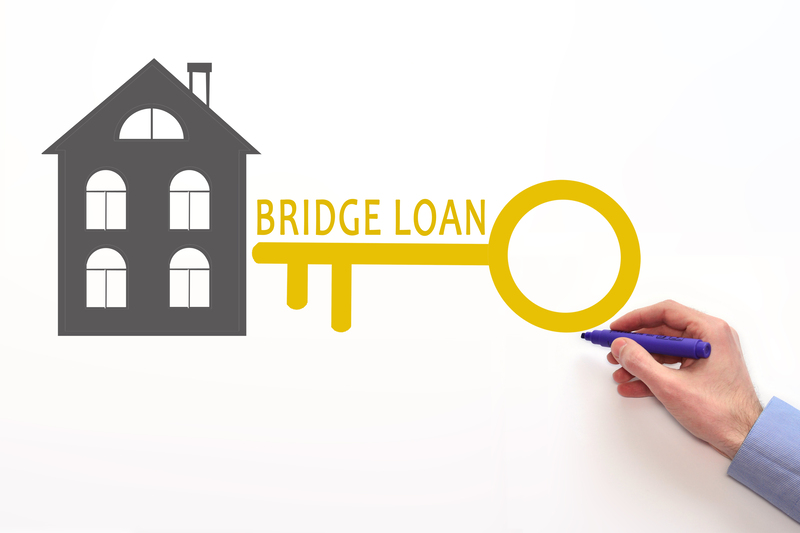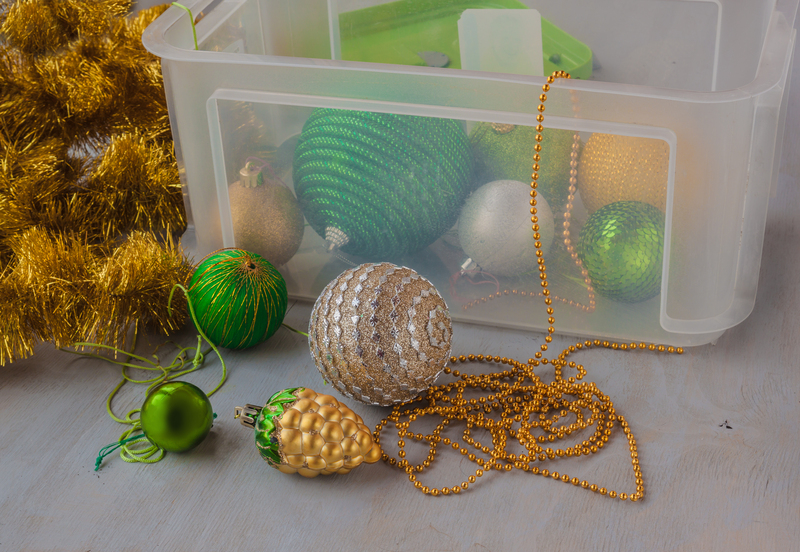Your Ultimate Handbook for Bed and Mattress Transition
Posted on 14/06/2025
Your Ultimate Handbook for Bed and Mattress Transition
If you've ever wondered about the best way to move from your old mattress and bed setup to a brand new sleep sanctuary, you're not alone. Bed and mattress transitions are a huge step toward enhancing sleep quality, improving your health, and making your bedroom a true haven. In this comprehensive guide, we'll take you through everything you need to know about transitioning beds and mattresses - from recognizing the signs it's time, to step-by-step moving tips, and even how to adapt to your new sleep surface comfortably.

Why Is Transitioning Your Mattress and Bed Important?
Understanding the importance of transitioning your bed and mattress at the right time is crucial for your overall well-being, posture, and quality of sleep. Here's why making the move matters:
- Enhanced Sleep Hygiene: A fresh mattress and sturdy bed frame support a cleaner, healthier sleep environment.
- Improved Back Support: Mattresses lose support over time. Upgrading at the right moment reduces the risk of aches and pains.
- Better Allergies Control: Older mattresses and beds can harbor allergens and dust mites.
- Increased Comfort: Newer mattress technologies offer various options for firmness and cooling, keeping you comfortable all night.
- Style and Functionality: A new bed setup can update your bedroom's look and improve its functionality with extra storage or space-saving designs.
Common Signs It's Time for a Transition
- Persistent back or neck pain upon waking
- Visible sagging, lumps, or dips in your mattress
- Increased allergies or respiratory issues in the bedroom
- Squeaky or unstable bed frame
- Tossing and turning throughout the night
- Mattress is more than 7-10 years old
Bed and Mattress Transition Planning
A seamless bed and mattress change begins with effective planning. To ensure a smooth transition:
- Assess Your Needs: Do you need a single, queen, king, or custom bed? Consider your space, sleep partners, and health requirements.
- Set Your Budget: Beds and mattresses come in a wide price range. Balance between quality and affordability.
- Research the Options: Learn about different mattress types (memory foam, hybrid, latex, innerspring) and what's best suited for your body and sleep style.
- Measuring the Space: Take precise measurements of your room to ensure your new bed fits perfectly.
- Plan Delivery and Removal: Arrange for the delivery of your new items and the removal/recycling of your old bed and mattress.
Mattress Types: What's Best For You?
Choosing the right mattress for your transition can feel overwhelming given the myriad of choices. Here's a quick rundown to help you decide:
- Memory Foam: Excellent for contouring to your body, pressure relief, and motion absorption. Ideal for side sleepers or those with joint pain.
- Innerspring: Supportive and breathable, offering a traditional bouncy feel. Great for hot sleepers and those who prefer a firmer surface.
- Latex: Naturally hypoallergenic, durable, and eco-friendly. Offers firm support and responsiveness.
- Hybrid: Combines foam and coils for balanced support, contouring, and durability. Suitable for most sleep styles.
- Pillow-top: Extra cushioning for plush comfort, suitable for those who enjoy a luxurious sleep surface.
What About the Bed Frame?
Your new mattress deserves the right foundation. Consider:
- Platform Beds: No need for a box spring, offers sleek aesthetics and good support.
- Adjustable Bases: Customizable settings for head and foot positions, great for those with specific comfort needs or medical conditions.
- Slatted Frames: Ensure the slats are not more than 3 inches apart for optimal mattress support.
- Traditional Frames: Pair with a box spring for classic support and height.
How to Transition from Old to New Bed and Mattress
Step 1: Preparing for the Transition
- Clear the Room: Remove obstacles and make space for maneuvering the new bed and mattress.
- Strip Your Bed: Remove bedding, pillows, and any accessories from the old mattress.
- Disassemble the Frame: If re-using your old frame or moving to a new one, take apart the components carefully. Keep the hardware safe.
Step 2: Removal and Recycling
Be eco-conscious and dispose of old mattresses and beds responsibly. Many retailers offer mattress removal or recycling programs. Alternatively, you can:
- Donate lightly used mattresses in good condition to local shelters or charities
- Schedule a bulky item pickup with your municipality
- Check if your mattress manufacturer offers take-back services or recycling options
Step 3: Setting Up Your New Mattress and Bed
- Carefully Unbox: Most modern mattresses arrive compressed. Let it fully expand in a well-ventilated room before placing on the frame.
- Assemble the Frame: Follow the provided instructions for a secure setup.
- Position Correctly: Ensure the bed is level and stable. Place your mattress according to the manufacturer's recommendations.
Adapting to a New Mattress and Bed
Transitioning to a new sleep environment can take time. It's common to experience a short adjustment period as your body gets accustomed to a different level of support and firmness.
What to Expect During the First Few Weeks
- Initial firmness or unfamiliarity in feel
- Possible mild aches as your body adapts to improved support
- Reduction in disturbances as the mattress settles (especially true with memory foam or hybrid types)
Tips To Speed Up the Adaptation Process
- Keep Your Bedding Consistent: Use familiar sheets and pillows to help your body adjust.
- Give It Time: Experts recommend sleeping on your new mattress for at least 30 days before making judgments.
- Maintain a Sleep Schedule: Stick to a regular bedtime and wake-up time to help your internal clock adjust.
- Use a Mattress Protector: Shield your investment while maintaining hygiene.
- Rotate the Mattress: Unless the manufacturer advises otherwise, rotating prevents uneven wear and supports faster adaptation.
Maximizing the Lifespan of Your New Bed and Mattress
Adopting good habits ensures your bed and mattress remain in optimum condition for years to come.
Maintenance Tips for Mattress Longevity
- Rotate Regularly: Every 3-6 months, rotate your mattress head-to-foot to prevent body impressions.
- Periodic Cleaning: Vacuum your mattress surface and clean stains promptly to avoid debris and odors.
- Support Matters: Check bed slats/foundations regularly for warping or wear.
- Avoid Excess Moisture: Keep your mattress dry to prevent mold and mildew.
- Use Mattress Protectors: Defend against spills, dust mites, and allergens.
When Should You Replace Your Mattress or Bed Again?
Most mattresses last between 7 to 10 years, while high-quality frames can last much longer. However, factors affecting lifespan include:
- Body weight and usage frequency
- Type and quality of the mattress and frame
- Presence of allergies or hygiene concerns
- Physical changes in your life (injury, pregnancy, etc.)
If you notice sagging, persistent discomfort, or an increase in allergies or noises, it might be time for a new bed and mattress transition again.

Frequently Asked Questions About Bed and Mattress Changes
Do I have to change my bed when I get a new mattress?
Not necessarily, but compatibility is key. Ensure your existing frame provides adequate support for the new mattress type and size.
How do I dispose of an old mattress safely?
Most cities offer recycling services or mattress take-back programs. Avoid leaving mattresses curbside unless prearranged through local waste management.
How long does it take to get used to a new mattress?
It typically takes 3 to 4 weeks for your body to adjust to a new sleeping surface fully.
What if my new mattress feels too firm or too soft?
Many mattresses soften with use. If yours feels uncomfortable after the trial period, consider adding a mattress topper or checking the foundation for correct support.
Conclusion: Embrace Your Mattress and Bed Transition
Transitioning to a new bed and mattress is an exciting step toward better health and restful sleep. With careful planning, proper setup, and realistic expectations, the change can be seamless and rewarding.
Remember: Listen to your body, monitor for any signs of discomfort, and make adjustments as needed. The right sleeping environment is vital for productivity, mood, and long-term wellness.
Your ultimate handbook for bed and mattress transition is here to help you enjoy the dreamiest nights ahead. Sweet dreams!



